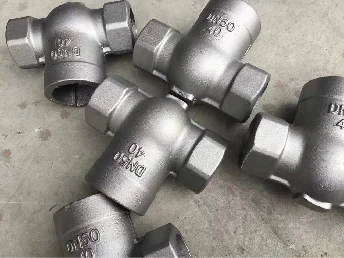The Importance of Foundry Sand Reuse in Sustainable Manufacturing
In the realm of manufacturing, sustainability has become a cornerstone of modern practices. One significant area where this is evident is in the reuse of foundry sand. Foundry sand is a high-quality silica sand that is used in the metal casting process. After the casting is complete, a large amount of this sand is often discarded, leading to environmental concerns and unnecessary waste. However, the reuse of foundry sand presents an excellent opportunity for reducing industrial waste while promoting sustainable practices.
Understanding Foundry Sand
Foundry sand serves a crucial role in the metal casting industry, where it is utilized to create molds for various metal products. The properties of foundry sand—its size, shape, and ability to withstand high temperatures—make it an ideal material for this purpose. However, once the casting process is finished, traditional practices have typically involved disposing of this sand as waste. It is estimated that millions of tons of foundry sand are generated every year, contributing to landfill overflow and environmental degradation.
Environmental Implications
The disposal of foundry sand poses significant environmental challenges. When foundry sand is sent to landfills, it can lead to soil and groundwater contamination, particularly if it contains residual chemicals from the casting process. Additionally, the extraction and processing of new sand can result in habitat destruction, increased energy consumption, and higher carbon emissions. Thus, the importance of finding a sustainable solution for managing foundry sand becomes evident.
The Benefits of Reuse
foundry sand reuse

Reusing foundry sand can mitigate many of these challenges. By recycling sand, the foundry industry can significantly reduce waste and lower the consumption of new raw materials. This practice not only conserves natural resources but also diminishes the energy required for sand extraction and processing. Moreover, reusing foundry sand can lead to cost savings for manufacturers. By decreasing the need to purchase new sand, companies can reduce their operational costs while simultaneously contributing to environmental stewardship.
There are several avenues for the reuse of foundry sand. It can be repurposed in various construction applications, such as in the production of concrete, asphalt, and even as a raw material for making bricks. Some companies have even experimented with its use in the agricultural sector, where it can improve soil conditions. By exploring innovative approaches to reuse, industries can unlock a valuable resource, transforming waste into a commodity.
Challenges in Implementation
Despite its numerous benefits, the widespread reuse of foundry sand faces several challenges. One major hurdle is the quality control of recycled sand. The presence of impurities and contaminants can deter industries from adopting recycled materials due to concerns about product integrity. To address this issue, rigorous testing and quality assurance processes must be established to ensure that reused foundry sand meets industry standards.
Additionally, education and awareness among manufacturers regarding the benefits and potential applications of foundry sand reuse are crucial. Many companies may not be aware of the economic and environmental advantages of recycling this material. By fostering partnerships between foundries, researchers, and construction industries, and by providing training and resources, it is possible to facilitate a broader acceptance of foundry sand reuse.
Conclusion
As the demand for sustainable manufacturing practices continues to grow, the reuse of foundry sand presents an effective solution to reduce waste and promote responsible resource management. By embracing innovative recycling methods and fostering collaboration across various sectors, the foundry industry can play a significant role in advancing sustainability. This not only benefits individual companies through cost savings but also contributes positively to the environment. Ultimately, the shift towards foundry sand reuse exemplifies a commitment to sustainable manufacturing that can pave the way for a greener future.
Post time:lis . 13, 2024 00:50
Next:metal casting sand
